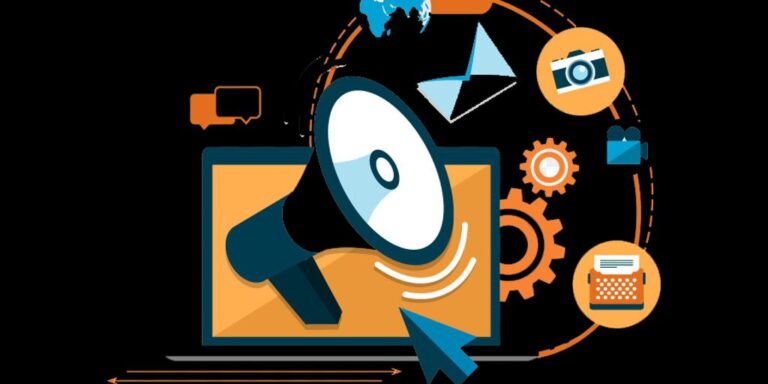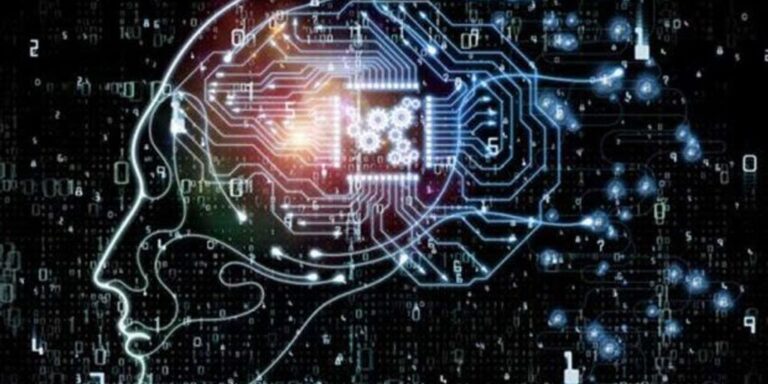The article explores the troubling rise of AI-generated nudity, a phenomenon where artificial intelligence is used to create realistic nude images of individuals without their consent. This practice, often involving the manipulation of existing photos, poses significant legal, ethical, and societal challenges. The discussion delves into the technology behind this issue, its impact on individuals and communities, and the broader implications for privacy and personal security.
Key Takeaways
- AI-generated nudity involves creating realistic nude images without consent, often by manipulating existing photos.
- The practice raises serious legal, ethical, and privacy concerns, highlighting the need for robust legal frameworks and ethical guidelines.
- Victims often face significant psychological distress and social stigma, underscoring the severe personal impact of this technology.
- The issue disproportionately affects women and teens, leading to calls for targeted protective measures and public awareness campaigns.
- Technological and community-driven solutions, including detection tools and educational initiatives, are essential in combating AI-generated nudity.
Understanding AI Nudity: Definitions and Mechanisms

What is AI Nudity?
AI nudity refers to the use of artificial intelligence to create or manipulate images to appear as though individuals are undressed. This technology leverages deep learning and neural networks to alter photos realistically, often without the consent of the depicted person. With AI, anyone can be a victim of nonconsensual porn.
How AI Generates Nude Images
AI uses complex algorithms to analyze and reconstruct images. The process involves several steps:
- Image selection: Choosing a base image to modify.
- Feature analysis: The AI identifies and analyzes key features and clothing.
- Image manipulation: Clothing is digitally removed or altered.
- Final rendering: The AI enhances the image to make it appear realistic.
The Technology Behind AI Nudity
AI nudity utilizes advanced machine learning models, particularly Generative Adversarial Networks (GANs), to create convincing images. These models are trained on vast datasets of images to understand and replicate human features accurately. The technology’s capability to ‘nudify’ images poses significant privacy and ethical concerns.
The Legal Landscape of AI Nudity

Current Laws and Regulations
The legal framework surrounding AI-generated nudity is still in its nascent stages, with many jurisdictions lacking specific laws that address this new form of digital content. Existing statutes may not explicitly cover AI-generated images, leading to legal ambiguities. For instance, laws that target traditional forms of nonconsensual pornography often do not extend to AI-generated content, which can complicate enforcement efforts.
Challenges in Legal Enforcement
Enforcing laws against AI-generated nudity presents unique challenges. The identification and classification of AI-generated content as illegal or harmful require advanced technological tools and expertise. Legal systems struggle to keep pace with the rapid development of AI technologies, making it difficult to establish clear legal precedents. Moreover, the global nature of the internet complicates jurisdictional authority, as content created in one country can easily spread worldwide.
Future Legal Considerations
As AI technology continues to evolve, so too must the legal frameworks that govern its use. Future legislation will need to address the specific challenges posed by AI-generated nudity, including issues of consent and the definition of ‘harm’. Policymakers will need to collaborate with technologists to understand the capabilities and limitations of AI, ensuring that new laws are both effective and enforceable. A comprehensive guide on using Nudify Online for generating nude images from uploaded pictures, discussing features, safety measures, and legal considerations, could serve as a model for future regulatory approaches.
Ethical Implications of AI-Generated Nudity

Consent and AI Nudity
Consent is a fundamental ethical concern in the creation and distribution of AI-generated nude images. The use of platforms like Nudify.Online, which can generate convincing nude images from clothed photos, raises significant questions about the violation of personal boundaries and the non-consensual use of one’s image.
The Moral Dilemmas
AI-generated nudity introduces complex moral dilemmas, including the potential for harm and the misuse of technology to exploit individuals. The ethical debate centers on the balance between technological innovation and the protection of individual rights.
Responsibility of AI Developers
AI developers play a crucial role in shaping the ethical landscape of AI-generated nudity. They must ensure that their technologies are developed and used responsibly, incorporating safeguards to prevent misuse and protect individuals from harm. This includes implementing strict user verification processes and promoting ethical standards within the AI community.
Impact on Individuals and Society

Psychological Effects on Victims
The psychological toll on individuals subjected to AI-generated nudity can be profound. Victims often experience severe emotional distress, including anxiety, depression, and a sense of violation that can linger long after the initial incident. The personal integrity and privacy of individuals are compromised, leading to long-term psychological impacts.
Social Repercussions
AI nudity not only affects individuals but also has broader social implications. It can lead to a breakdown in trust within communities and can exacerbate social inequalities. The technology’s ability to create realistic images can fuel misinformation, affecting social dynamics and relationships. The DeepNude AI, a controversial technology, raised ethical concerns about privacy, consent, and objectification.
Cultural Impact of AI Nudity
The cultural implications of AI-generated nudity are significant. Different cultures may respond variably, with some viewing the technology as a violation of moral and ethical norms, while others might see potential applications in areas like fashion and healthcare. However, without stringent regulations, the misuse of such technology could have far-reaching consequences.
AI Nudity and Gender Dynamics

Disproportionate Impact on Women
The phenomenon of AI-generated nudity has a disproportionate impact on women, often victimizing them at a higher rate than men. This trend not only perpetuates existing gender inequalities but also exposes women to higher risks of sexual harassment and digital abuse.
Gender and Digital Exploitation
AI technologies, including those used for creating nonconsensual nudity, often exploit gender biases to target or affect women more severely. This exploitation is evident in the algorithms that disproportionately select female images for generating nonconsensual content, thereby intensifying gender-based digital violence.
Feminist Perspectives on AI Nudity
Feminist scholars and activists argue that AI nudity is not just a privacy issue but a profound gender justice issue. They advocate for more stringent regulations and ethical guidelines to protect individuals, especially women, from being exploited by AI technologies in harmful ways.
Technological Countermeasures and Solutions

AI Detection Tools
The development of AI detection tools is crucial in identifying and mitigating the effects of AI-generated nudity. These tools use advanced algorithms to analyze images and detect signs of digital manipulation. The effectiveness of these tools is paramount in preventing the spread of non-consensual explicit content.
Legal Tech Solutions
Legal tech solutions are being developed to assist in the enforcement of laws against AI-generated nudity. These include software that can trace the origin of images and identify the creators of AI-generated content. This technology is essential for holding offenders accountable and ensuring that victims receive justice.
Community-Driven Initiatives
Community-driven initiatives play a vital role in combating AI nudity. These can range from awareness campaigns to workshops that educate the public about the dangers of AI-generated content. By empowering communities, we can create a collective resistance against the misuse of AI technologies.
Case Studies: Victims of AI Nudity

Personal Stories
Victims of AI-generated nudity often experience profound emotional distress and a sense of violation. The personal stories of those affected highlight the deep psychological impact and the struggle for legal recourse. Many victims equate their experiences with traditional forms of revenge porn, seeking similar legal remedies such as claims for invasion of privacy or emotional distress.
Legal Battles
Navigating the legal landscape is complex for victims of AI nudity. The laws often do not directly address the nuances of AI-generated content, leading to challenges in prosecution and defense. Victims and their lawyers must often argue for the applicability of existing laws on non-consensual pornography to include AI-generated images.
Recovery and Support
Recovery from the trauma of AI-generated nudity involves both psychological counseling and community support. Initiatives and support groups have been crucial in helping victims rebuild their confidence and address the stigma associated with such incidents. Educational efforts also play a key role in informing victims about their rights and the available legal options.
Global Perspectives on AI Nudity

Cultural Variations in Response
Different cultures have varied responses to AI-generated nudity, influenced by local norms, legal systems, and societal values. In some regions, the use of deepnude ai technologies is met with stringent opposition and legal actions, while in others, the regulatory framework may be less defined, allowing for a broader proliferation of such content.
International Legal Frameworks
Countries around the world are at different stages of developing and implementing legal frameworks to address the challenges posed by AI nudity. Here’s a brief overview of the current status:
- United States: Advanced digital privacy laws, yet struggles with enforcement.
- European Union: Strong GDPR compliance demands clear consent.
- Asia: Mixed responses with some countries having strict bans and others having minimal regulations.
Global Cooperation and Challenges
Global cooperation is crucial to effectively manage the risks associated with AI nudity. However, achieving international consensus is challenging due to differing views on digital rights and freedom of expression. Efforts to harmonize laws and share best practices are ongoing but face significant obstacles in balancing diverse cultural and legal perspectives.
The Role of Social Media and Internet Platforms

Platform Policies on AI Nudity
Social media platforms have implemented various policies to combat the misuse of AI in generating non-consensual nudity. These policies are crucial in setting the boundaries for what is permissible on their platforms and ensuring user safety. Platforms must enforce these policies consistently to maintain trust and deter misuse.
Enforcement of Community Guidelines
Effective enforcement of community guidelines is essential in preventing the spread of AI-generated nudity. This involves not only detecting and removing such content but also penalizing users who violate these guidelines. Social media companies are investing in advanced detection technologies to keep pace with the evolving threats.
The Accountability of Tech Giants
The role of major tech companies in regulating and preventing the misuse of AI technologies cannot be understated. They have a responsibility to their users and the public to actively monitor and intervene when their platforms are used for harmful purposes. This includes collaboration with legal authorities and other platforms to address these challenges comprehensively.
Educational Initiatives and Public Awareness

Educating the Public on AI Risks
Educational initiatives aimed at raising awareness about the risks of AI-generated content are crucial in the digital age. These programs often involve workshops, seminars, and online courses designed to inform individuals about how AI can be used to create deceptive or harmful content. By understanding these risks, the public can better protect themselves and participate in informed discourse.
Workshops and Seminars
Workshops and seminars play a pivotal role in educating the public and professionals about AI nudity and its implications. These events provide hands-on experiences and expert insights, helping attendees grasp the complexities of AI technologies and the ethical considerations involved. They often cover topics such as the detection of AI-generated content, the legal ramifications, and strategies for digital literacy.
Role of Non-Profits and Activism
Non-profit organizations and activists are at the forefront of addressing the challenges posed by AI nudity. They organize campaigns, develop educational materials, and work closely with communities to foster a proactive approach to digital safety. Their efforts are essential in building a society that is aware and prepared to tackle the challenges posed by AI-generated content.
Future of AI Nudity: Trends and Predictions

Advancements in AI Technology
As AI technology continues to evolve, the capability to generate more realistic and convincing nude images is expected to improve significantly. This progression will likely be driven by enhancements in machine learning algorithms and more sophisticated image processing techniques. The potential for AI to create hyper-realistic images poses significant challenges for privacy and consent.
Potential New Threats
The advancement of AI in creating nude images will inevitably lead to new forms of misuse, including increased instances of harassment and blackmail. Particularly concerning is the potential for these technologies to be used against vulnerable populations, such as minors and individuals without their consent. The rise of deepfake technology and its implications for nonconsensual content creation is a critical area of concern.
Preventative Measures
To combat the risks associated with AI-generated nudity, a combination of technological, legal, and educational measures will be essential. Development of AI detection tools and legal frameworks will need to keep pace with technological advancements to effectively address these issues. Additionally, public awareness campaigns and educational programs will play a crucial role in mitigating the impact of these technologies on society.
Expert Opinions and Commentary

Insights from Technologists
Technologists emphasize the rapid evolution of AI technologies, highlighting the urgent questions about privacy, consent, and the ethical use of AI. They advocate for robust ethical guidelines to govern AI development, especially in sensitive areas like AI-generated nudity.
Legal Expert Analysis
Legal experts discuss the complexities of current laws surrounding AI-generated content. They stress the need for updated regulations that can keep pace with technological advancements, ensuring that legal frameworks adequately protect individuals from potential harms.
Activists’ Views on Solutions
Activists are pushing for greater transparency and accountability from AI developers and platforms. They propose community-driven initiatives and stronger enforcement of existing laws to mitigate the societal impact of deep nude technology.
Conclusion
The rise of AI-generated nudity presents a complex blend of technological prowess and profound ethical dilemmas. As AI continues to evolve, the ease with which it can be used to create and disseminate non-consensual nude images poses significant privacy concerns and societal risks. It is imperative for policymakers, technologists, and communities to collaborate on developing robust legal frameworks, ethical guidelines, and technological solutions to mitigate abuse and protect individuals’ rights. The urgency of addressing these issues cannot be overstated, as the implications of inaction are far-reaching, affecting the dignity and security of individuals worldwide.
Frequently Asked Questions
What is AI nudity?
AI nudity refers to the use of artificial intelligence technology to create or manipulate images to depict individuals as nude without their consent. This often involves ‘nudifying’ existing photos where the subject’s clothing is digitally removed.
How is AI used to generate nude images?
AI uses deep learning algorithms to analyze the structure and appearance of clothed images, then generates a new image where the clothing is replaced with realistic-looking skin, mimicking nudity.
What are the legal implications of AI-generated nudity?
AI-generated nudity can lead to legal issues such as invasion of privacy, defamation, and could be subject to laws against non-consensual pornography or ‘revenge porn.’
What ethical concerns arise from AI nudity?
Ethical concerns include the lack of consent from individuals whose images are manipulated, potential emotional harm, and the misuse of technology for exploitation and harassment.
How can victims of AI-generated nudity seek help?
Victims can report the abuse to local authorities, seek legal counsel to explore options for litigation, and reach out to support groups that specialize in digital abuse and harassment recovery.
What measures can be taken to prevent AI nudity?
Preventative measures include stricter regulations on AI development, advanced detection tools to identify fake images, and public awareness campaigns about the risks and legal consequences of creating such content.
Are there any detection tools available to identify AI-generated nudes?
Yes, there are AI detection tools that analyze images for signs of digital manipulation. These tools can help platforms and law enforcement identify and take action against AI-generated nude content.
What is the role of social media platforms in combating AI nudity?
Social media platforms are responsible for enforcing community guidelines that prohibit non-consensual nudity. They can implement detection technologies, respond to reports promptly, and collaborate with law enforcement to address violations.











